For Elizabeth regarding Vajra Yogini Mandalas
(By Tsem Rinpoche, June 17, 2011)
Dear Elizabeth, I have recorded a message on video for you. Please see the above. I wish you well and tremendous success in your practice.

This is from a old thangka of Vajra Yogini with Her holy image in the centre which is fine instead of Bam letter.

This is the more commonly used form which is with the Bam in the centre. Also without the Bam and just white (moon disc) is fine. I would use something like this for self initiation purposes personally…

This is another modern one of having Her sacred image in the centre.

This is a very old thangka ( I do not own) of Sacred Vajra Yogini within Her mandala three dimensional. I thought I’d include it here for you to have a visual blessing.

This is the nearly the same as above…

This is a wonderful and interesting thangka of Vajra Yogini within Her divine Kechara abode with Her other two forms on the immediate left and right of the main figure. Right above Her is Father Heruka. Very nice. The bottom has the protectors of Her tantra (included) within the long sadhana recited daily. Above Her are the lineage Lamas, Yamantaka, Guyasamaja, Vajrasattva and Kalacakra (short form).
As I stated in the video… Please contact Beng Kooi at bengkooi@gmail.com.
I wish you luck, concern, prayers and supreme requests to go all the way with your Vajra Yogini practice.
Tsem Rinpoche

Kandarohi, Vajra Yogini and Dorje Shugden. Kandarohi is one of the Four Heroines of the Cardinal Directions from Vajra Yogini’s mandala and is known as the “Goddess of Action”. Click on image to enlarge or click here for more beautiful thangkas.
Please support us so that we can continue to bring you more Dharma:
If you are in the United States, please note that your offerings and contributions are tax deductible. ~ the tsemrinpoche.com blog team

























































































































































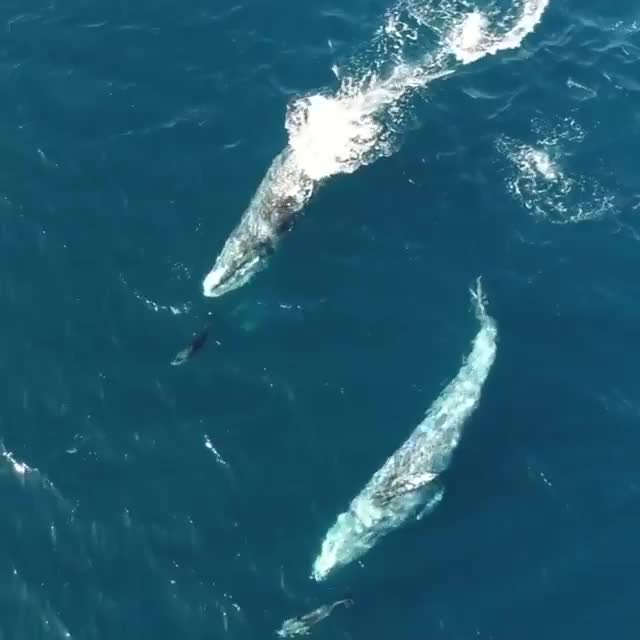

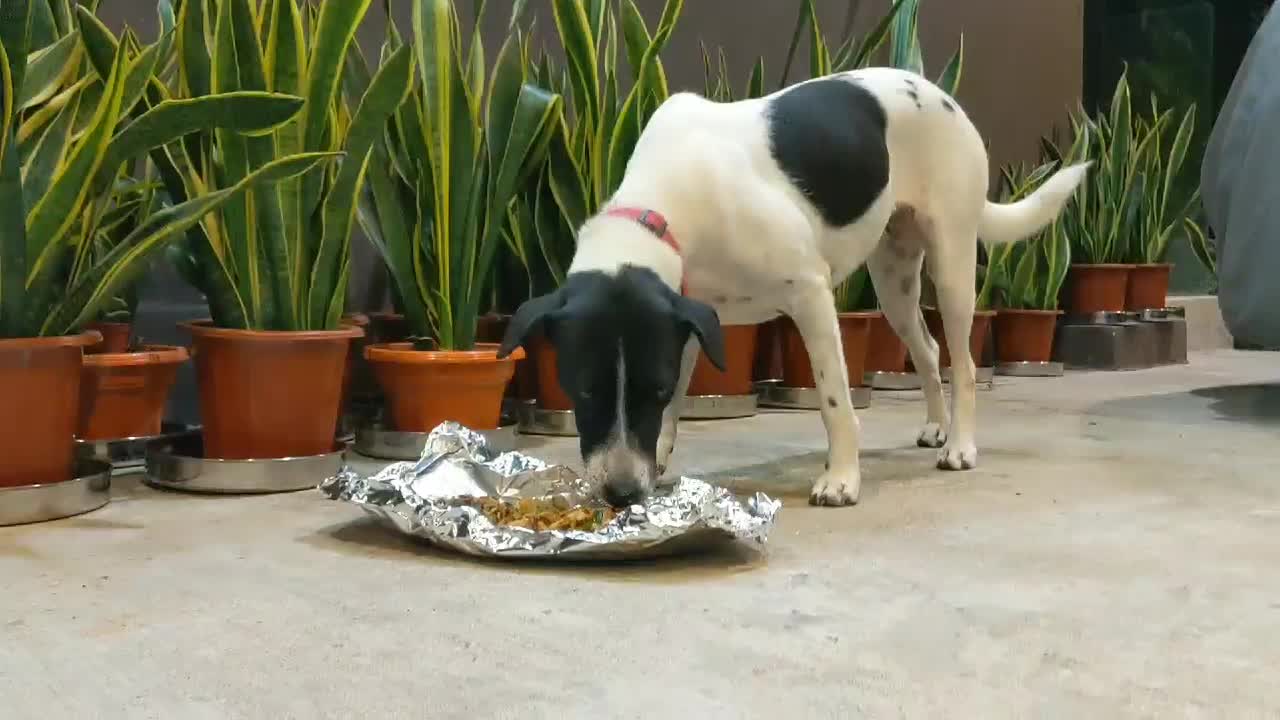
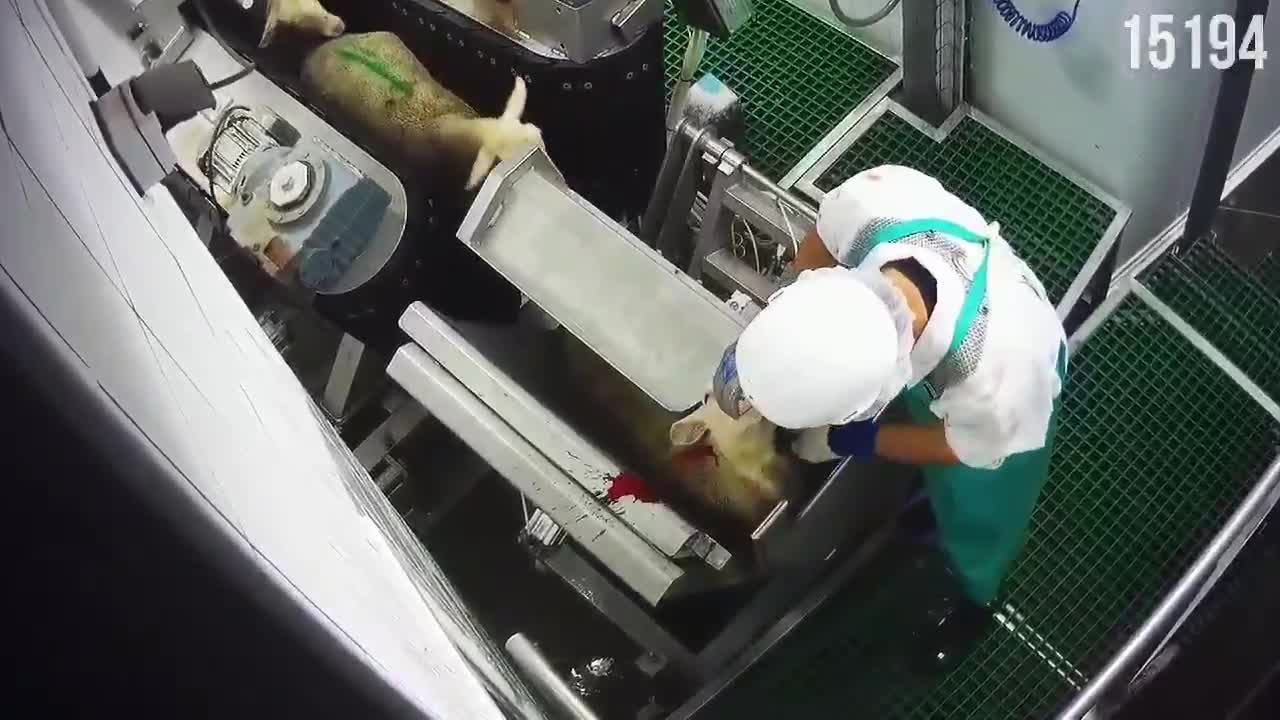

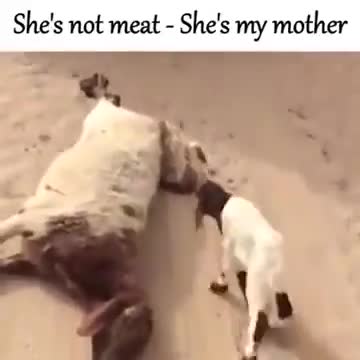
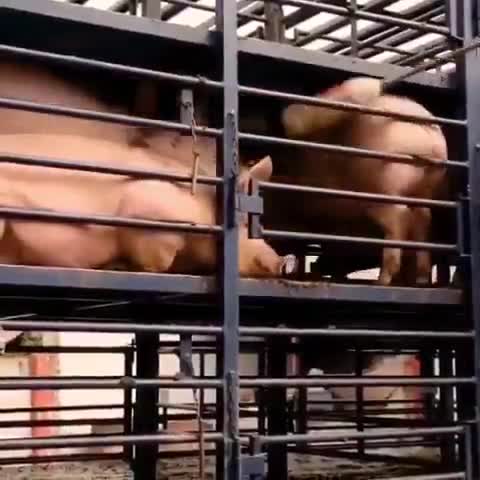

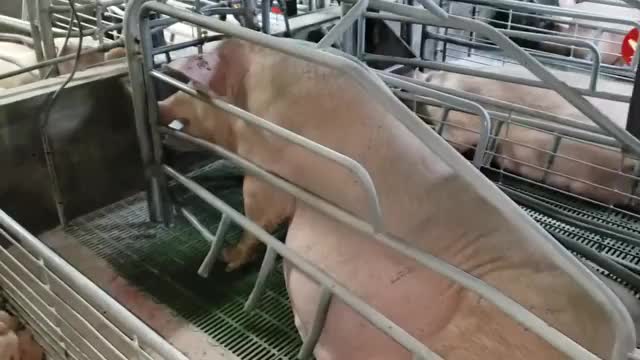
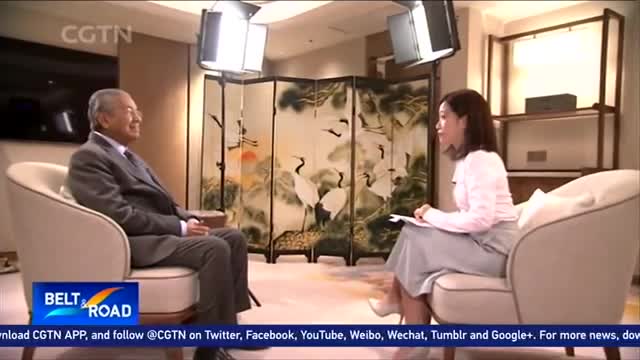
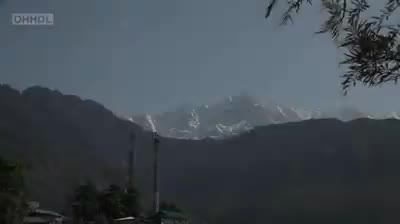
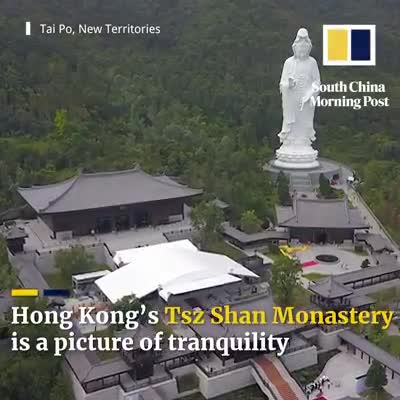

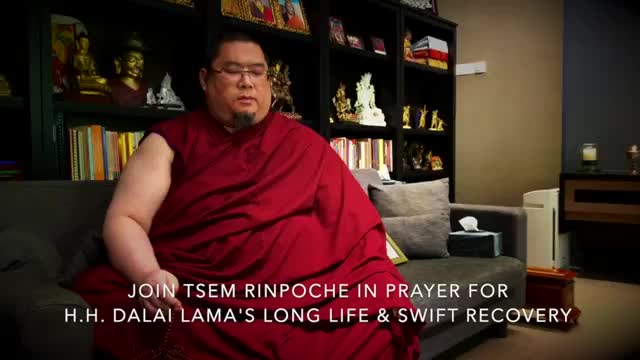
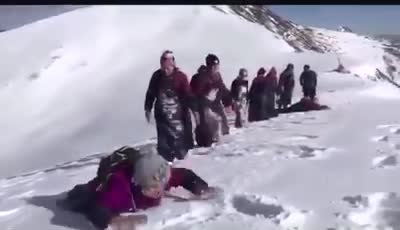
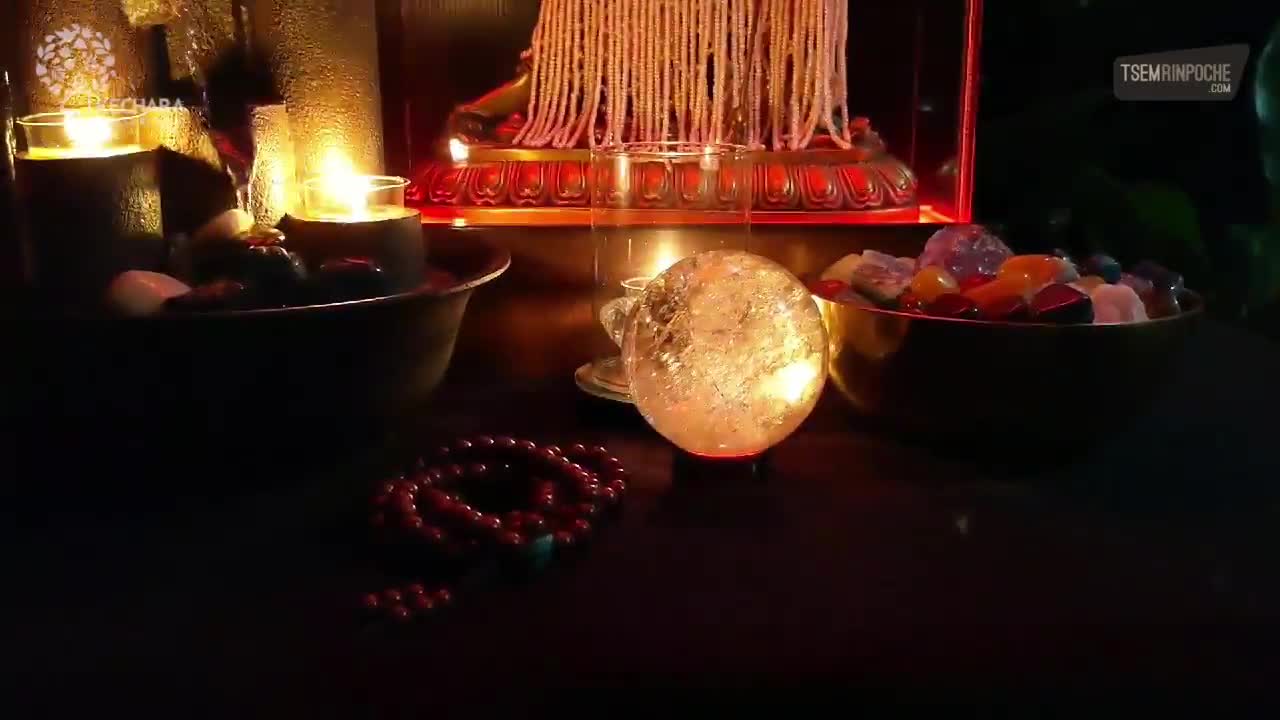

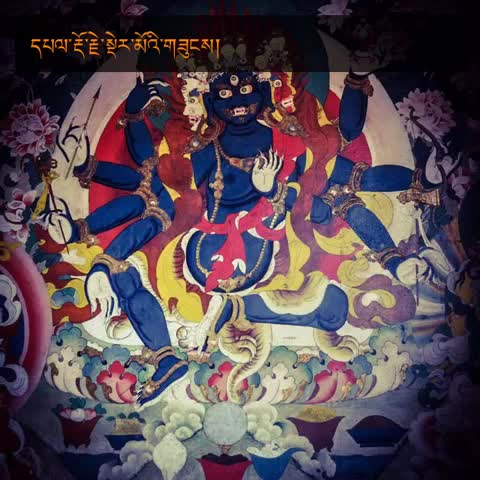
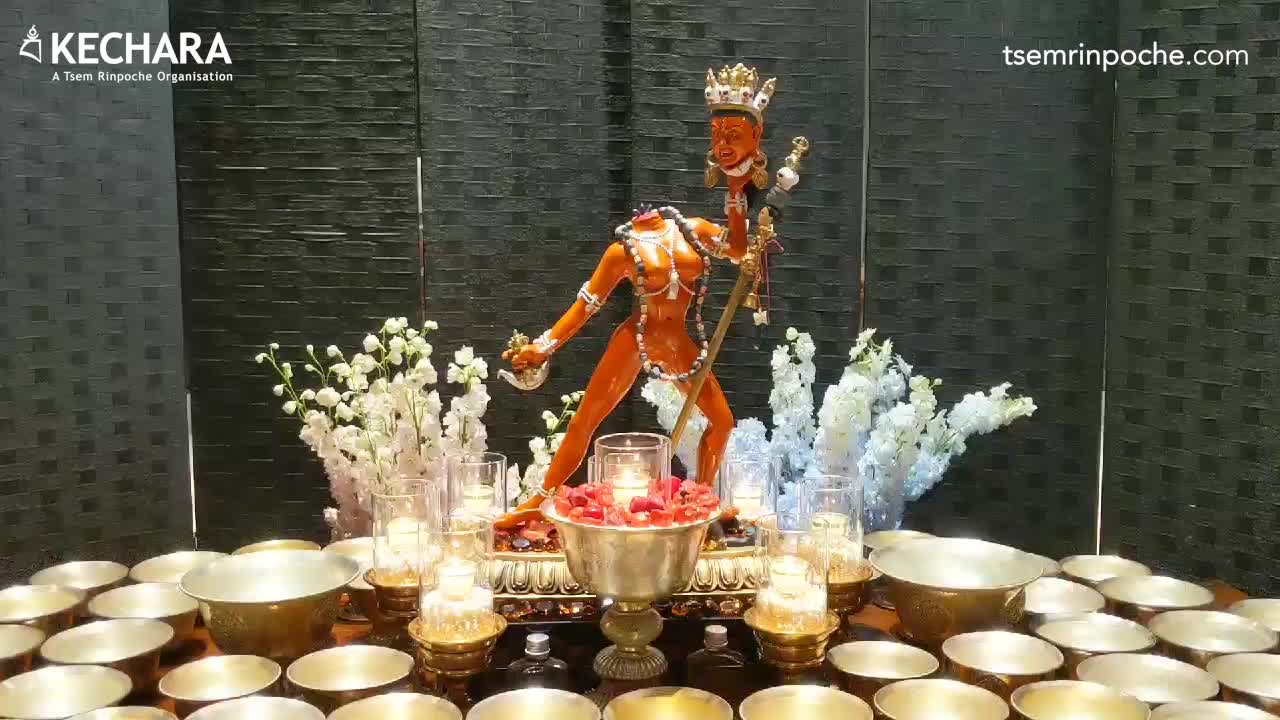





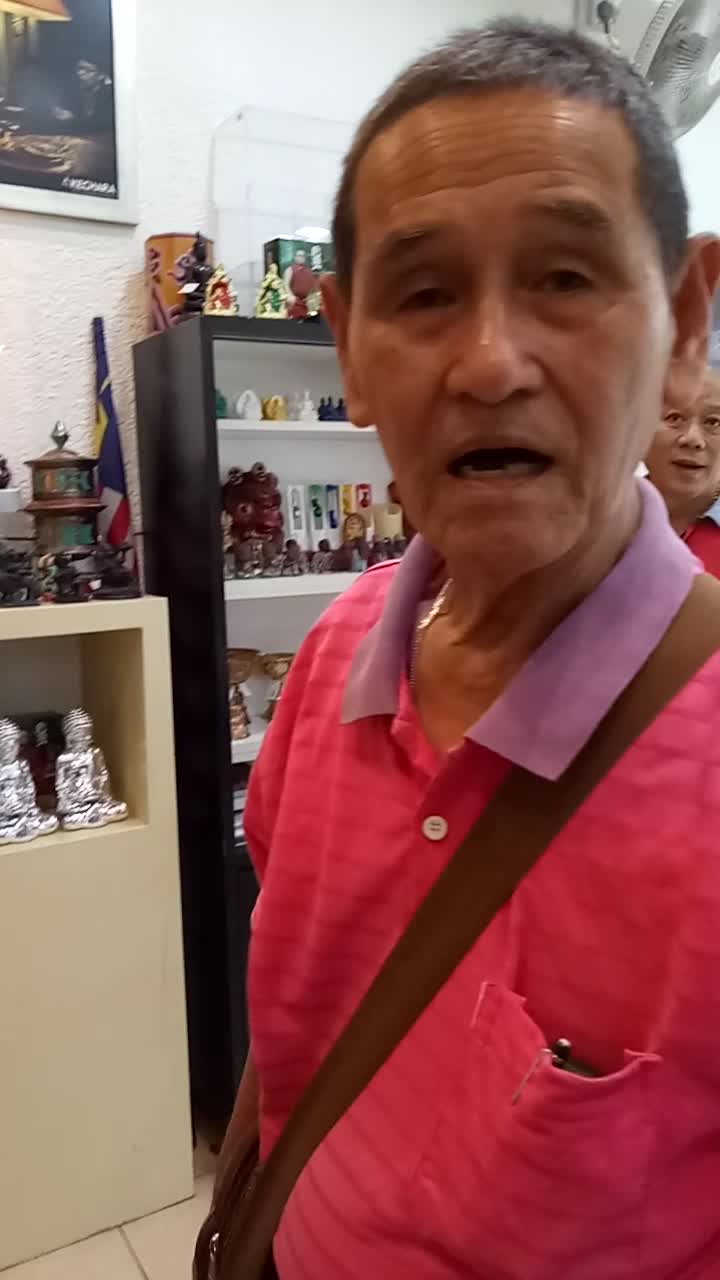







































































Dear Lama Tsem Rinpoche,
Is it possible for you to sen me the short Sadhana of Vajra Yogini. my eMail victorgareau@yahoo.ca Thank you for your work.
Victor
Dear Victor Gareau,
Thank you for your question. I’m not sure if you are aware, but H.E. Tsem Rinpoche passed into Parinirvana in 2019. You can read more about this here: https://www.tsemrinpoche.com/tsem-tulku-rinpoche/me/the-parinirvana-of-kyabje-tsem-rinpoche.html
In regards to Vajra Yogini’s sadhana and practices, they require her initiation. As such, if you have received the intiation from a qualified guru, you can contact them or the Dharma centre where you received the initiation to get the text. They should have it available according to your particular lineage practices as they gave the initiation.
I hope this helps. Thank you.
Very informative and interesting sharing of Elizabeth’s question on Vajrayogini’s mandala. Wow …. beautiful thangkas of sacred Vajra Yogini which I first time coming across. To me its precious and rare thangkas, merely looking at it is a blessing. An eye opener indeed and may more people connected to her.
Thank you Rinpoche for sharing this.
A sacred image of the rare form of Vajrayogini known as Ucheyma, the Buddha that shows us the path to eradicate the ego. For this and many other high-resolution images of the enlightened beings to download for free visit: https://bit.ly/2oxb4qU
Ucheyma (Severed Headed Vajrayogini) (Main figure)
(Top to bottom): H.H. the 7th Panchen Lama, Ucheyma (Severed Headed Vajrayogini), Vajra Varnani (green assistant), Vajra Vairocani (yellow assistant), Dorje Shugden and Citipati.
The central deity is known as Chinnamasta or Dorje Neljorma Ucheyma. Both Chinnamasta (Sanskrit) and Ucheyma (Tibetan) literally mean, ‘She Whose Head is Severed’. The meaning behind her form is to show practitioners that they need to completely remove the grasping and self-identification with the “I” or the ego. Generally, the identity of the self is strongly associated with our face more than any other part of our body. We usually recognise a person when we look at a person’s face. Hence, our self-identification or ego is strongly associated with our face. To show us that this self-identification needs to be overcome on the spiritual path to enlightenment, Vajrayogini uses her ritual chopper to decapitate herself. This is symbolic of her practice eradicating the ego.
The Severed Headed Vajrayogini, as she is also known, removes all afflictive mental constructs by removing the root cause – the identification of the self, the ego. We are either attached to or averse to people and circumstances because we have an ego to please, gratify and protect. But in the grander scheme of things, this self-identification with the ‘I’ is illusory and does not really exist. Therefore, Vajrayogini reveals this ultimate truth through the dramatic decapitation of her head and at the same time is still able to live and function. She is able to live due to her direct perception of emptiness and egolessness.
Contrary to what some people might think, the eradication of the self does not destroy individualism, our personality or make us into a mindless person. In fact, the eradication of the ego makes us become a vibrant and compassionate person, someone that has greater awareness of the suffering of others. In other words, we become much warmer, kinder, forgiving, tolerant, conscientious, generous, contemplative and we are become a joy to be with. The cutting of the ego or the ‘I’ brings us towards awakening our true self, the Buddha nature within.
The Severed Headed Vajrayogini has two dakini attendants. From the trunk of her neck, there are three severed blood vessels spurting three jets of blood that flow into the mouths of her own decapitated head that she carries in her left hand and into the mouths of her two attendants. Tsem Rinpoche explained that the three jets of blood represent that her practice purifies the three psychic poisons of ignorance, hatred and desire. In turn, this leads to the attainment of the three bodies of a Buddha – the emanation body, the enjoyment body and the truth body. In other words, the severance of the ego via her tantric path leads to the purification of all delusions and ultimately, the attainment of Buddhahood itself.
The 7th Panchen Lama, Palden Tenpai Nyima is featured floating above because of his compilation of sadhanas from the ancient Sadhanamala texts. This includes a particular sadhana or collection of prayers, visualisation and mantra focused on Ucheyma. Incidentally, Dorje Shugden in many of his previous lives was a lineage master of the Vajrayogini tantras as well. These previous lives include the likes of the Mahasiddha Naropa and Tsarchen Losel Gyatso. The Lord and Lady of the Charnel Ground, known as Citipati, are one of the main protectors of the Vajrayogini Tantra.
Last of all, the ascetic meditator engaging in his devotional practices towards Ucheyma in the cemetery represents the ideal environment for tantric practice because such environments invoke deep renunciation towards worldly affairs and attachments. All Buddhist traditions advocate meditating on the bones of the deceased because it reminds us of our mortality and hence, we develop revulsion towards the transient nature of worldly or ordinary existence.
More free downloads: https://bit.ly/2oxb4qU
Read more about Vajrayogini: https://bit.ly/2iVLCuG
Ucheyma (Severed Headed Vajrayogini) (Main figure)
(Top to bottom): Maitri Kacho (Flying Vajrayogini), Maitri Kacho (One-Leg Up Vajrayogini), Naro Kacho, Sukhasiddhi, Ucheyma (Severed Headed Vajrayogini), Vajra Varnani (green assistant), Vajra Vairocani (yellow assistant), Citipati, Vajravarahi and Dorje Shugden.
The central deity is known as Severed Headed Vajrayogini, Chinnamasta or Dorje Neljorma Ucheyma. Both Chinnamasta (Sanskrit) and Ucheyma (Tibetan) literally mean, ‘She Whose Head is Severed’. The meaning behind her form is to show practitioners that they need to completely remove the grasping and self-identification with the “I” or the ego. Generally, the identity of the self is strongly associated with our face more than any other part of our body. We usually recognise a person when we look at a person’s face. Hence, our self-identification or ego is strongly associated with our face. To show us that this self-identification needs to be overcome on the spiritual path to enlightenment, Vajrayogini uses her ritual chopper to decapitate herself. This is symbolic of her practice eradicating the ego.
The Severed Headed Vajrayogini removes all afflictive mental constructs by removing the root cause – the identification of the self, the ego. We are either attached to or averse to people and circumstances because we have an ego to please, gratify and protect. But in the grander scheme of things, this self-identification with the ‘I’ is illusory and does not really exist. Therefore, Vajrayogini reveals this ultimate truth through the dramatic decapitation of her head and at the same time is still able to live and function. She is able to live due to her direct perception of emptiness and egolessness.
Contrary to what some people might think, the eradication of the self does not destroy individualism, our personality or make us into a mindless person. In fact, the eradication of the ego makes us become a vibrant and compassionate person, someone that has greater awareness of the suffering of others. In other words, we become much warmer, kinder, forgiving, tolerant, conscientious, generous, contemplative and we are become a joy to be with. The cutting of the ego or the ‘I’ brings us towards awakening our true self, the Buddha nature within.
The Severed Headed Vajrayogini has two dakini attendants. From the trunk of her neck, there are three severed blood vessels spurting three jets of blood that flow into the mouths of her own decapitated head that she carries in her left hand and into the mouths of her two attendants. Tsem Rinpoche explained that the three jets of blood represent that her practice purifies the three psychic poisons of ignorance, hatred and desire. In turn, this leads to the attainment of the three bodies of a Buddha – the emanation body, the enjoyment body and the truth body. In other words, the severance of the ego via her tantric path leads to the purification of all delusions and ultimately, the attainment of Buddhahood itself.
Severed Headed Vajrayogini is surrounded by some of her other forms, including Naro Kacho, two forms of Maitri Kacho, Sukhasiddhi and Vajravarahi. These forms of Vajrayogini are more commonly practised compared to Severed Headed Vajrayogini and are prevalent in most Tibetan Buddhist lineages. Though they may look different, all forms are indivisible from her true nature and all her practices can lead practitioners to enlightenment. Naro Kacho arose from a vision beheld by the Mahasiddha Naropa, Maitri Kacho from a vision beheld by Maitripa, and Indra Kacho from a vision beheld by Indrabodhi. The Lord and Lady of the Charnel Ground, known as Citipati, are one of the main protectors of the Vajrayogini Tantra.
Last of all, Dorje Shugden is a protector with special affinity with Vajrayogini practitioners because he arose from an incarnation lineage that includes Naropa and Tsarchen Losel Gyatso who practised and proliferated her Tantra.
More free downloads: https://bit.ly/2oxb4qU
Read more about Vajrayogini: https://bit.ly/2iVLCuG
Vajrayogini (Main figure)
(Top to bottom): Naropa, Vajradharma, Hero Vajradharma, Naro Kacho, Maitri Kacho (Flying Vajrayogini), Dorje Shugden and Vajravarahi.
Vajrayogini is a female tantric Buddha and she has many forms that are derived from various lineages. She mainly embodies the fully enlightened female (shakti) aspect of a Buddha. She belongs to the Mother Tantra classification, which refers to her practice concentrating on the wisdom aspect of the path to Buddhahood. She is also the principal dakini, the compassionate female guides and nurturers of tantric meditation who lead practitioners to enlightenment. In the thangka, the main figure in the middle is Naro Kechari as she arose from the pure vision of the Mahasiddha Naropa.
In Anuttara (Highest) Yoga Tantra, principal dakinis normally appear in union with a male consort and this can be seen in the cases of deities such as Guhyasamaja, Hevajra, and Kalachakra. In the case of Vajrayogini, she is the principal female Buddha of the Chakrasamvara Tantra and therefore, she is normally in union with Heruka Chakrasamvara. Furthermore, Vajrayogini is also considered a Vajradakini, who are yidams or meditational deities in their own right. Their practices have evolved from the main practices of their consorts, simplifying the otherwise complicated original practice by reducing it to a single-deity meditation without sacrificing the main benefits and features of the original. Hence, Vajradakini practices such as Vajrayogini and Nairatmya are derived from the original Chakrasamvara Tantra and Hevajra Tantra respectively.
In essence, Vajrayogini is known as “Sarvabuddha-dakini” or the Dakini Who is the Essence of all Buddhas. Her mantra is known as the King of All Mantras as it has the most powerful ability to bless us with spiritual attainments even without any visualisation or meditation. There are 11 Yogas in the generation stage of her practice and a few which have the power of transforming ordinary actions like sleeping, waking and ordinary daily tasks into a collection of merits. Ultimately, her Tantra offers salvation for ordinary practitioners at death with her special promise of guiding practitioners towards Kechara, or the Paradise of the Dakinis, in which we can continue deep practices to become a Buddha without fear, obstacles and interruptions.
Within Vajrayogini practice, soliciting the blessings of the lama and the lineage master are of paramount importance in order for our practice to bear results. Hence, the lama is visualised as the red Vajradharma with arms crossed at the heart, holding the vajra and bell. The lineage masters are visualised as Hero Vajradharma, holding a damaru and skullcup while cradling a khatvanga. Aside from the main Naro Kechari form, Vajrayogini also appears in the form of Maitri Kechari, who is known as Flying Vajrayogini, and arose from the vision of Maitripa. Another common form is known as Indra Kechari, or Vajravarahi, who arose from the vision of Indrabodhi.
Last of all, Dorje Shugden is a Dharma protector with a special affinity with Vajrayogini practitioners. This is because he himself arose from an incarnation lineage that includes the likes of Naropa, the progenitor of Naro Kechari practice, and Tsarchen Losel Gyatso who had practised and proliferated her Tantra and is listed as one the lineage masters invoked upon every day by Vajrayogini practitioners.
More free downloads: https://bit.ly/2oxb4qU
Read more about Vajrayogini: https://bit.ly/2iVLCuG
Original illustration and text posted by Eric D Hatchell as a reply to H.E. Tsem Tulku Rinpoche’s facebook post on Vajrayogini here: http://bit.ly/VYogini0001
The Dākiṇī with the Essence of all Buddhas, Vajrayoginī
Her practice includes methods to end the otherwise repetitive states of Bardo and rebirth, by transforming the process into a journey, which may lead to full enlightenment. In preparation for which, Vajrayoginī further offers the omnipresent ability to reconstruct the nature of the most, mundane everyday experiences, such that they may reveal higher destinations, via the spiritual paths she may choose to reveal. [1] Vajrayoginī being defined as, “The Dākiṇī who is the Essence of all Buddhas”, [2] is amplified by scholar Miranda Shaw when she implied that this deity is no less than, the supreme nature of the very Tantric pantheon. No male Buddha, including her divine consort, Heruka-Cakrasaṃvara, further advances her in metaphysical implications. [3]
Vajrayoginī’s sādhanā originates from India circa 10/12th C, [4] when summoned as Heruka-Cakrasaṃvara’s Yab-Yum consort [5], with later forms including Vajrayoginī as “Solitary Hero”, she may be visualized with the deep red complexion of a 16-year-old female, whose stance is nude amidst a blazing fire of pristine awareness and most exalted wisdom. Her head is adorned with a crown of five skulls and upon her forehead, the third eye of wisdom is set vertically (represented here by an auspicious jewel). She drapes a necklace of fifty dried human skulls and is depicted with her traditional vajra-handled knife in her right hand; with a blood filled kapala in her left, she drinks with upturned head while looking above, toward the pure realm of Khechara. This seemingly gruesome gesture is actually symbolic of her clear light in great joy, known as “mahasukha” (the great bliss), [6] [7] thus the blood she drinks may be offered to us all as if a fine wine.
Resting on the left shoulder is a Katvanga staff as she stands tall with her two feet, trampling the bodies of red Kalaratri and black Bhairava (with heads bending backward), representing the embodiment of illusion and ego-awareness. The composition, all of which rests above a sun disc and multicolored lotus pedestal, she is rendered here after a thankga of Naropa Tradition (passed down from a special teaching of the Indian Mahasiddha Naropa). Vajrayoginī herself may be classified as the personification of “Wisdom” or “Mother” and her practice originates with the Chakrasamvara Cycle of Tantras, which is one of the five principal tantric practices of the Sakya School, although found in one form or another, she is included in all schools of Tibetan Buddhism. [8]
Vajrayoginī also appears in versions from the Kagyu school of Tibetan Buddhism, with one popular system having the practitioner visualize themselves as Vajrayoginī, as such, their guru taking the form of Milarepa. [9] Thus depicted above the central deity here we see Milarepa on our right, with his great Guru Marpa left (whose guru was Naropa himself, and other great Indian masters). [10]
Vajrayoginī is a simplified, single most form of the female Buddha, who is otherwise a collection of alternate forms. From her sādhanās she is visualized in English terms as “Vajra Sow”, “Wrathful Lady”, “Fierce Black One”, and other such similar manifestations of female energy found in numerous iconographic renderings and traditions. Each feature of Vajrayoginī’s visualization conveys important spiritual concept. For example, her three eyes indicate her ability to see all (past, present and future); her red-colored body symbolizes the blazing of her ”inner fire”, and the curved knife she wields, demonstrates the power to sever the delusions and obstacles of her followers and of all living beings. [11]
—–
Wordmarque Design and Photography
—–
References:
[1] Gyatso, Kelsang. Guide to Dakini Land: The Highest Yoga Tantra Practice of Buddha Vajrayogini. London: Tharpa, 1996, p.xii.
[2] “The Berzin Archives.” Bonding Practices for Mother Tantra. Accessed February 18, 2016. http://www.berzinarchives.com/…/bonding_prac_mother_tantra_….
[3] Shaw, Miranda Eberle. Buddhist Goddesses of India. Princeton: Princeton University Press, 2006, p. 8.
[4] English, Elizabeth. Vajrayoginī: Her Visualizations, Rituals & Forms: A Study of the Cult of Vajrayoginī in India. Boston: Wisdom Publications, 2002.
[5] “Vajrasattva (Buddhist Deity) – White (with Consort).” Vajrasattva (Buddhist Deity). Accessed February 18, 2016. http://www.himalayanart.org/items/77598.
[6] Gyatso, Kelsang. Guide to Dakini Land: The Highest Yoga Tantra Practice of Buddha Vajrayogini. London: Tharpa, 1996 p. 123-127.
[7] Glenn H. Mullin
[8] “Item: Vajrayogini (Buddhist Deity) – (Naropa Tradition).” Vajrayogini (Buddhist Deity). Accessed February 18, 2016. http://www.himalayanart.org/items/290.
[9] English, Elizabeth. Vajrayoginī: Her Visualizations, Rituals & Forms: A Study of the Cult of Vajrayoginī in India. Boston: Wisdom Publications, 2002, p. xxiii.
[10] Drinking the Mountain Stream: Songs of Tibet’s Beloved Saint, Milarepa … by Mi-la-ras-pa, Rinpoche Lama Kunga, Brian Cutillo, p.305.
[11] Gyatso, Kelsang. Guide to Dakini Land: The Highest Yoga Tantra Practice of Buddha Vajrayogini. London: Tharpa, 1996, p.123-127.
The current form of Naro Kacho Vajra Yogini appeared to the Indian Mahasiddha Naropa after he meditated intensely on her practice inside a cave. He beheld her glorious form in a vision. This unique form became known as Naropa’s Vajra Yogini or Naro Kacho, as it had never existed before. Later, in Tibet, His Holiness Kyabje Pabongka Rinpoche also had visions of Vajra Yogini. His vision differed slightly from the vision of her that Naropa beheld. In the original Naro Kacho form, Vajra Yogini looks towards her pure land named Kechara. However in Kyabje Pabongka Rinpoche’s vision, she looked straight at him, symbolic of the deity empowering him to bestow her practice to many people in order to benefit them. The practice of Vajra Yogini belongs to the Highest Yoga Tantra classification that leads to tremendous inner transformation and can even grant enlightenment within just one lifetime.
Video of Tsem Rinpoche’s shrine taken July 16, 2018. Very beautiful, well done and meticulous.
https://www.youtube.com/watch?v=LPAfpMoN2bA
Video of Tsem Rinpoche’s shrine taken July 16, 2018.
Very beautiful, well done and meticulous.
https://video.tsemtulku.com/chat-videos/chat-1531752637.mp4
Vajra Yogini has many different forms and in each of these forms, the positioning of her sacred body, the various implements she holds and the expressions on her face have profound meaning into various aspects of enlightenment. The implements she holds, the expressions on her face, and her body symbolise specific aspects of enlightenment that suit people during a particular time and place according to their karma. So, therefore, Vajra Yogini’s pose, forms and emanations change over time in order to suit different karmically-connected practitioners. It will keep changing because enlightenment is fluid, compassionate and skilful. To gaze upon Vajra Yogini is to look at a complete ‘roadmap’ to enlightenment as every aspect of her body is a manifestation of enlightenment. Therefore to have her form, picture, painting or statue is very blessed. We should make offerings to her daily diligently.
After the great Mahasiddha Naropa had served his guru the Mahasiddha Tilopa for 12 years, Tilopa conferred the Vajra Varahi (another form of Vajra Yogini) initiation with full instructions unto Naropa. Then, Naropa diligently meditated on Vajra Varahi and had a vision of her, and when she appeared to him directly, she appeared in the form of Vajra Yogini. Normally, when he engaged in the Vajra Yogini (Vajravarahi) practice, she was in the form of facing him directly, holding a skull cup and a curved flaying knife in front of her heart. One leg was up and one leg was down as in a dancing pose. That was the form of Vajra Yogini that he had meditated on to gain the highest attainments.
After he had meditated on Vajra Varahi and gained visions of her, she appeared to him in a different form, with her face looking up at Kechara Paradise instead of facing him directly. Her left hand holding the skullcup was thrust in the air and her right hand holding the curved flaying knife, also known as a cemetery knife was facing down at sentient beings or samsara to help beings cut their bonds to suffering. Her left leg was bent, and her right extended while standing in a pose of looking towards Kechara Paradise like she is about to take off there. This form signifies she will take you there and out of suffering. That form of Vajra Yogini became special and that was called Naro Kacho or the Vajra Yogini of Naropa. This Naropa’s Vajra Yogini was initiated to the Nepalese Pamtingpa brothers and they meditated diligently and this tradition of Naropa’s Vajra Yogini just became prevalent and took off from there. Naropa started initiating his other disciples as well into this special form of Vajra Yogini and she became known as Naropa’s Vajra Yogini till this day and it is considered a highly blessed lineage. That is the lineage we have now and most prevalent.
She is looking up because this Naropa’s Vajra Yogini is indicating she will lead her practitioners to her Kechara Paradise within one lifetime if you are diligent in her practice. Realizing enlightenment is harder for people in today’s world and needs more time during Kaliyuga degenerate period, she leads you to her paradise where you can practice undisturbed to Buddha-hood.
In this brilliant artwork, what you see is the Mahasiddha Naropa having a direct vision of Vajra Yogini. It’s the first time she has appeared to Naropa in this form. This form is associated with Naropa. Prior to Naropa, this form of Vajra Yogini did not exist. She in this vision is initiating him into this form (Naro Kacho) of herself indicating this form will be most efficacious now according to our karmic period. In the background, you will see a cave with a light in it because when Naropa used to meditate in that cave, it is said that from his body would emit a light and people could see it from afar. You can also see animals surrounding Vajra Yogini, they can feel her compassion and her great blessings and they are at peace around her.
Vajra Yogini brings peace, love, compassion, wisdom and freedom to everyone who practices her incredibly powerful tantra. Therefore, this artwork is a very beautiful representation of the time when Naropa had a vision of Vajra Yogini in this form for the first time and it is now known as Naropa’s Vajra Yogini. This artwork was offered to me as a gift from a very talented artist. I deeply appreciate this piece of visual spirituality very much.
Tsem Rinpoche
To download for your shrine, please click here: https://www.tsemrinpoche.com/?p=62528
From Tsem Rinpoche: Every person who has Maha-anuttaratantra empowerments (Eg. Heruka, Guhyasamaja, Yamantaka, Vajra Yogini, Chittamani-Tara, Kalacakra, Hevajra, Gyalwa Gyatso Chenresig, etc) should keep a copy of this on their shrine or prayer book. These are all the ritual items tantric practitioner must keep by commitment. If it is in picture form, it is alright also.
Thank you Rinpoche for explaining to us here that in traditional self-initiation mandala there is no image of Vajrayogini in the middle, with or without the BAM. Wow, it is really interesting that when we see a picture of a mandala, we are actually looking at it from the top.
I never knew that that was the way that we are viewing the mandala. I had always thought that it was a different thing as compared to the 3D mandala. and it is a different mandala all together.
Thank you Rinpoche for explaining that the BAM letter is the definitive form of Vajrayogini which is pure emptiness.
Through the video it is has reiterated to me that Vajrayogini’s body actually shows us the steps to enlightenment. It has reminded me once again how we can find clues from Buddhas or high lamas on path to enlightenment.
In our time we are so fortunate to be able to gaze on the form of Vajrayogini. May viewing her form plant many seeds of enlightenment in us.
Thank you Rinpoche for showing all the beautiful thangkas of sacred Vajra Yogini and her mandala. This is an eye opener and also a visual blessing for me as i have not seen Her holy images in the mandala before, may all of us will get connected to her and have the merits to do Her practice soon!
谢谢仁波切的分享,非常殊胜能够在这里观赏到金刚瑜伽母曼荼罗,愿我们都能更精进修持,让我们有机会对金刚瑜伽母身坛城修法有更好的佛缘
Dearest Rinpoche, At the first glance, this post was a feast for the eyes as you have posted many beautiful photos of mandala. I really love looking at them especially the old thangkas. Thank you for the video as it gave me more insights to Vajrayogini practice. With folded hands.
谢谢仁波切分享殊胜的金刚瑜伽母身坛城修法。听说修习此法门可以得到即身成佛的殊胜成就。祈愿我可以渐渐的对金刚瑜伽母身坛城修法有深厚的佛缘和开示而让我可以轻易的修习此法门。感恩仁波切的教诲与开示。
感恩仁波切的开示与教诲
能够看到如此庄严与神圣的金刚瑜伽母曼荼罗,感觉如此的法喜充满与心中无比的踏实
感恩尊贵的上师您的开示,让我们能种下有力的善种子在心中,结下善缘,让我们更有动力与目标在我们的修行道路上更加的精进
Thanks Rnpoche for the sharing.
I do not know what is self initiation and the significance of the the Vajrayogini Mandala, because Vajrayogini practice require many preliminary practice and initiation by a qualified Lama.
But thanks to Rinpoche for sharing so many beautiful thangka of Vajrayogini. I enjoy them so much.
Thank you for sharing the Elizabeth’s question and your answer regarding Vajrayogini’s mandala. It is nice to learn a little about Vajrayogini. I hope that one day I may be able to have the honor to receive such wonderful practices.
[…] Vajra Yogini Mandalas: https://www.tsemrinpoche.com/tsem-tulku-rinpoche/students-friends/for-elizabeth-regarding-vajra-yogin… Sunset Vajra Yogini: […]
[…] Vajra Yogini Mandalas: http://blog.tsemtulku.com/tsem-tulku-rinpoche/students-friends/for-elizabeth-regarding-vajra-yogini-… Sunset Vajra Yogini: […]
Thank you for your brilliant advice. As a student fortunate enough to be in the Jewel Heart sangha under Gelek Rimpoche, please know that your website and blogs are very beneficial to many outside of your direct sangha.
David
When Lama Zopa came to Oakville Ontario and near my home , about 5 or 6 years ago. I knew absolutely nothing about Buddhim I donot even realize he was my guru. How ever I felt his presence at different times of my life and still feel protected under his umbrella. H e had a cough and struggled with our language and many people lost patience and left . I wast so grateful he came , I could not leave . I wondered why he went so long so himself , I thought he must be tired. Sometimes it would be four am in the morning , before he would finish during his week long stay here,.my mentor and former Tibetan Nun mentioned later that , Lama Zopa was waiting for some to leave before going on , to another initiation. There was white Tara , green Tara, Yamatuka . Vagra Yogini and with her as a dietyI had, many experiences even before I went to this. I had been drawing these two hearts one right side up and one upside down and the where together like the two triangle Madala. A few years before this I saw thes two triangles come together in my minds Eye. The just before seeing Lama Zopa . I helped a young girl and neighbor take a bandage off of her newly made tattoo. She asked for these two hearts however did not see it finished, she asked me what it looked like, as I took the Bandage off. I was so surprised it was the same I was doodling for days. Now seeing Lama Zopa I asked a teacer of discovering Buddism. Dr. David Gould. I asked what was I drawing , he said it was a mandala and Vajra Yogini lived in the middle of it. Here tonight I hear you say we can have a practice around Vajra Yogini. It seems fitting with all the messages and even more I had than the ones I mention here. I also was doing a spontaneous Mudra when a practitioner taught me meditation, I had gone to him originally for help . I also now practice doing the Medicine Buddha, because I wish to help the Horses I adopted. I have experience allot of messages around thes beautiful beings and get called by them , sometimes it is for help . I am so sorry I did not understand enough to be devoted to a practice, now I regret it. As it is difficult for me to understand how from Lama Zopa’s site . I love Lama Zopa and always will. I also got to meet him a few times face to face. I wish him well. I am also so very grateful to your video,s . I learn more from them than the written word. I will listen about Vajra Yogini over and over. Dear Tsem Tulku Renpoche , thanks so much for this Video to Elizabeth. I will do my very best to figure this Practice out. Right now I seem to only do the practice in the early morning hours. The rest is reading up and finding out what it is for me to follow as a Practice.my you be we’ll dear Rinpoche and so wonderful you have this place for both young and older LoL like me. I am 61 this year. And taking this very seriously , at this point in my life. Thank you again dear Rinpoche pray one day you might be my Guru and accept me as your student, Love and Blessings Amala (Sheilagh Margaret Mercer)
So good. Always wonderful from Rinpoche. He is a great blessing for everyone.
Very informative and interesting, thank you for taking the time to post the different pictures and explain
Dear Rinpoche,
what a lovely post. .
thank-you so much for sharing this elizabeth’s post with all us
such a wonderful opportunity to hear about precious teaching of
Dear Tsem Tulku Rimpoche,
Many thanks for the unexpected pleasure of a video response! Your thoughts about the double triangular are much appreciated.
It is wonderful to share a Vajra Yogini connection.
I applaud your courage to share the dharma so carefully and yet so very directly via your website and blog and vblog. You are quite brave. And I appreciate your good efforts and actions very much.
There is no way to tell you how lucky I feel every single day to be a student of Kyabje Gelek Rimpoche, and to live very close to him. No words to describe it.
So surprised by the gifts from you! The images you have posted are both beautiful and useful. Lots of folks will enjoy those photos. Really excellent :):) Re: the pendants– thank you, how very kind of you. I will take them to KGR and leave it up to him to distribute them. Again, many thanks — all best always,
Elizabeth Hurwitz
Thank you Rinpoche for sharing Elizabeth’s question of Vajrayogini’s mandala.
It is always great to receive any teachings, be it short or long on Vajrayogini.
May we all be blessed even by seeing all these holy images.